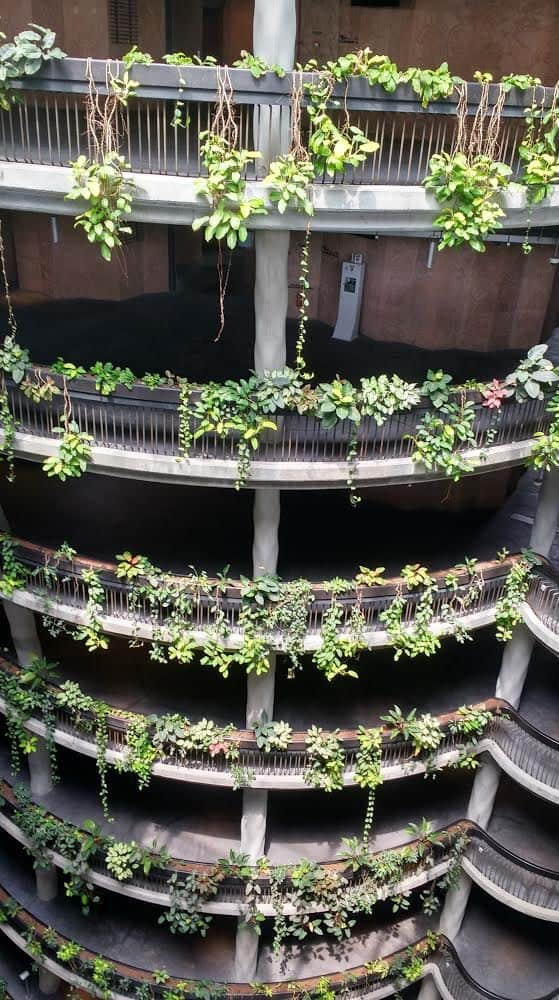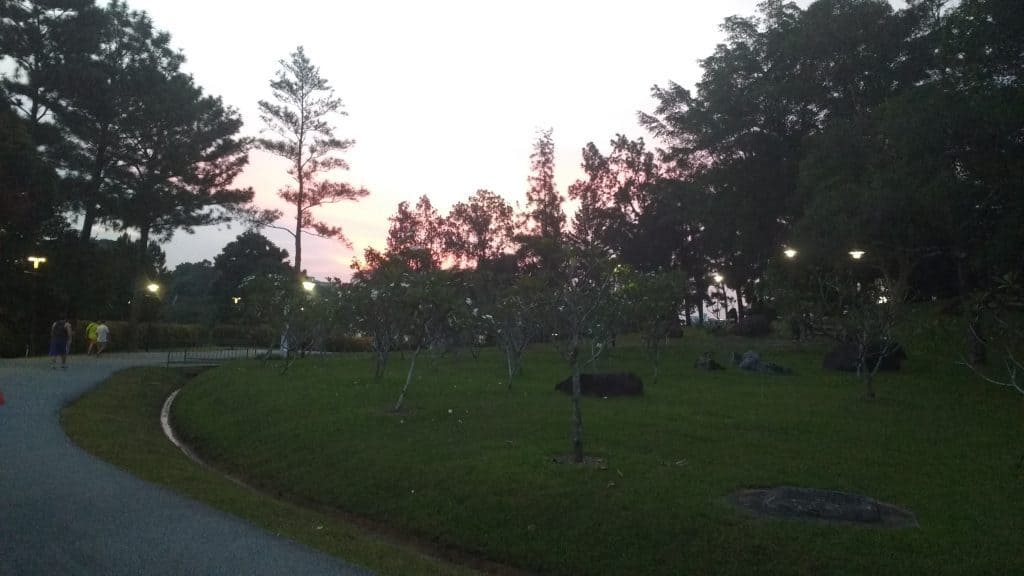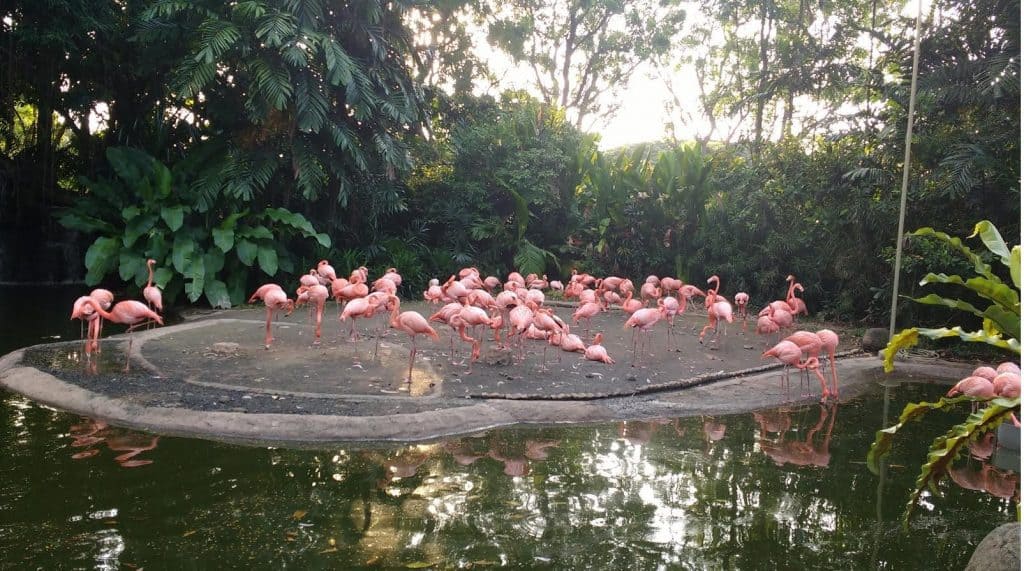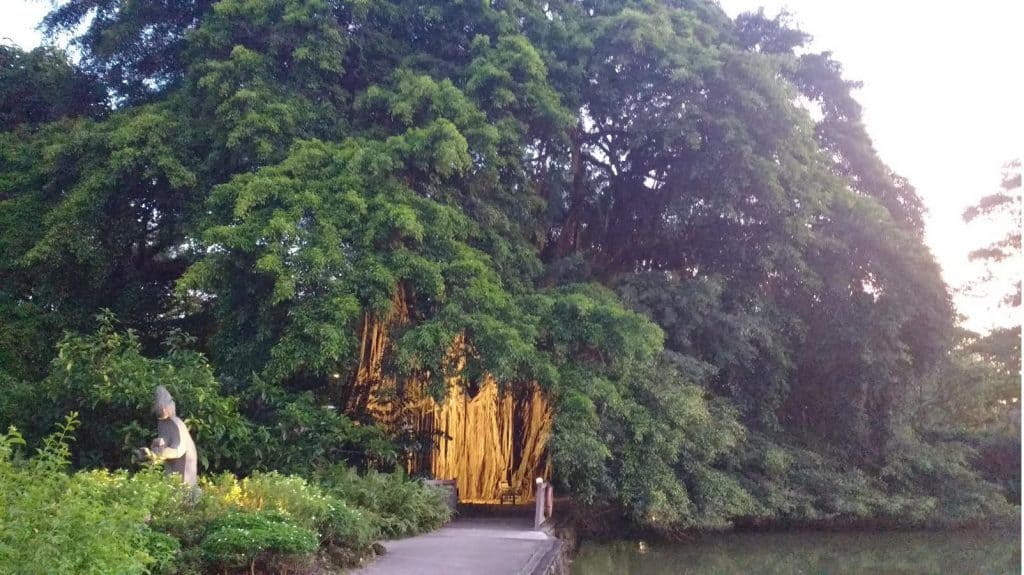When my son and daughter-in-law invited us to Singapore, we of course were happy to go stay with them. However I had my own reservation about the place, because I thought it was a concrete city. After seeing the beautiful Rockies of Canada with my son and daughter-in-law, I did not know what to expect in Singapore!
As we travelled by the ultra-clean train from the airport early in the morning, I did see the city dotted with varieties of high-rise buildings. But I was surprised to see a lot of green pockets in between. My stay in Singapore was memorable and there were many things which appealed to me there: the cleanliness, disciplined traffic, wonderful public transport system, excellent housing facilities of the Government (Housing Development Board – HDB), and above all, the urban greenery of Singapore.

Hanging creepers from buildings in Singapore. Pic: Sudha Narasimhachar
I understand Singapore tops the world as far as urban greenery is concerned. One can easily see that on visiting this beautiful country. As many as 90% of Singaporeans have their own homes, and 80% of the population resides in the houses built by the HDB.
All residential complexes are surrounded by trees and ornamental flowering plants. The complexes are well-planned with walking and cycling tracks around them, play-areas for children, gyms and playgrounds shopping complexes in between, bus stops nearby and beautiful parks at approachable distances. The ground floors in all buildings are meant for common amenities like child-care centres, senior citizen centres, police helplines, medical centres and libraries.
Shelters for cyclists, trees under metro tracks
Parks are maintained well with huge trees, lawns and decorative plants. I saw banners in many places announcing that Singapore was going to build shelters for cyclists and pedestrians all over the city. Most of the work has already been done!
As we travelled by buses, I observed a wonderful feature. Every space that can be turned green is covered with greenery! Trees had lined up below the metro tracks, with allowance for the trees to go above the flyovers too, on the sides. Creepers and climbers all along the pillars of the flyovers.
Singapore claims to have more than 3 million trees. All developments comply with 100% greenery replacement policy. This means that whatever greenery lost in developing a building has to be replaced by way of roof gardens.

Greenery has been developed and preserved in Singapore. Pic: Sudha Narasimhachar
Even 50 storey buildings have gardens on two or three levels and the roof. And what to say of the Marina Bay area, where an artificial freshwater lake has been created and beautiful forests called the Gardens by the Bay have been created over a vast land area of 250 acres! It is really a wonder to see the tropical forests and gardens of all the countries inside huge glass domes. The banyan trees, the different kinds of palms, the red wood trees and what not! One has to see it to believe it.

Artificial freshwater lake. Pic: Sudha Narasimhachar
I visited the National University of Singapore and the Nanyang Technological University, Singapore. Nanyang Technological University covers an area of 450 acres and is green, green, green all over. The buildings are well-designed to merge with the greenery around. One particular building is designed like a cave, and I was awed to see the building literally mixed with greenery – trees, plants, shrubs, climbers and creepers everywhere possible, on all levels. So, we never felt we were on the fourth flour!
Singapore has a botanical garden, a zoo, a bird park and so many more green islands and water bodies. And all this in such a small city that had nothing just 50 years ago where everything had to be created! What an achievement, what a wonderful way of developing!
This just proves that development need not kill ecology. Ecological health is essential for the good health of the people residing there, and willing citizens and governments can preserve it.
Bengaluru can become a Singapore
Back home, it is sad to see that though we are gifted by nature with such a congenial weather, fertile land, plenty of water bodies and rainfall, we care two hoots for all that while developing urban spaces. We butcher trees like it’s nobody’s business, pollute water bodies and kill them and have no control over how a city grows. We have absolutely no planning. Heritage buildings and heritage trees are just not protected. Making money is the only aim!

Trees in the middle of the city in Singapore. Pic: Sudha Narasimhachar
A once-beautiful garden city of Bangalore, which had hundreds of lakes, today has been successfully turned into a concrete jungle and a garbage city. A beautiful river has been turned into a ditch of polluted water. Many green hillocks have been mercilessly denuded and turned into ugly concrete jungles.
So many of our politicians and administrators visit Singapore. What have they learnt and implemented? We have so much to learn from Singapore.
Reports said recently that Bengaluru might become unlivable very soon. Let us not allow that. Singapore planners feel no city can become unlivable if development takes care of all factors and are now aiming at developing further, only underground! We are not hard up for space. Let us stop the growth of Bangalore and develop newer cities with a good plan and foresight!
(Thanks to National Geographic for the statistics and certain facts.)